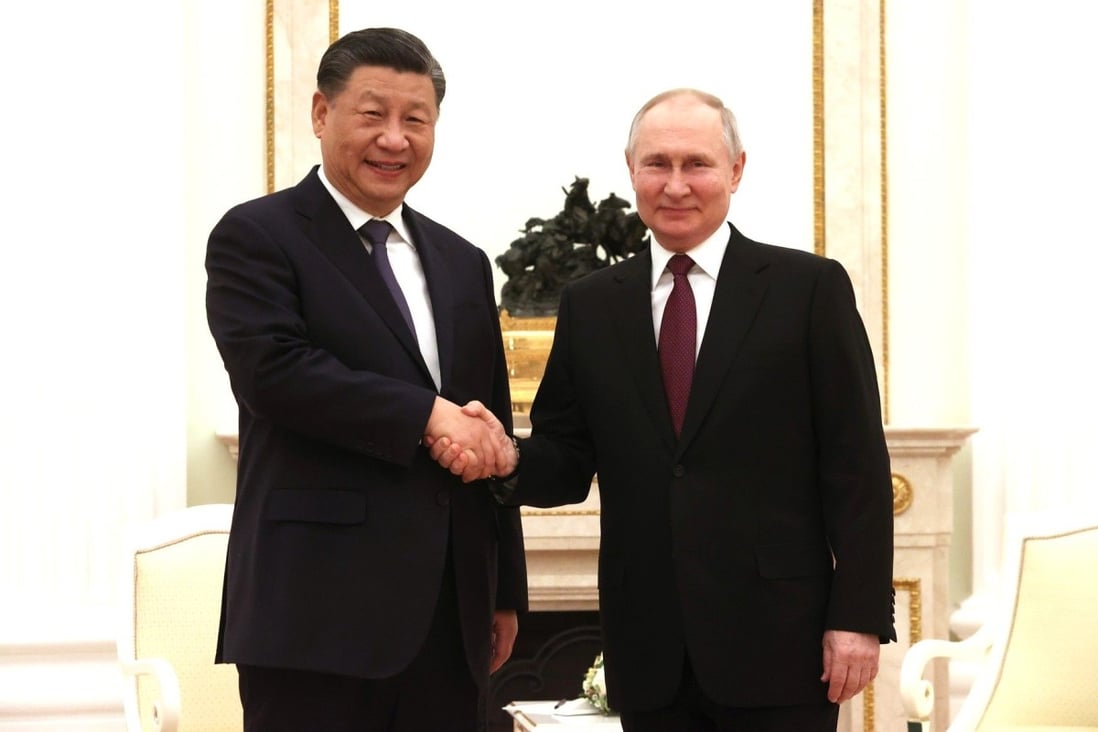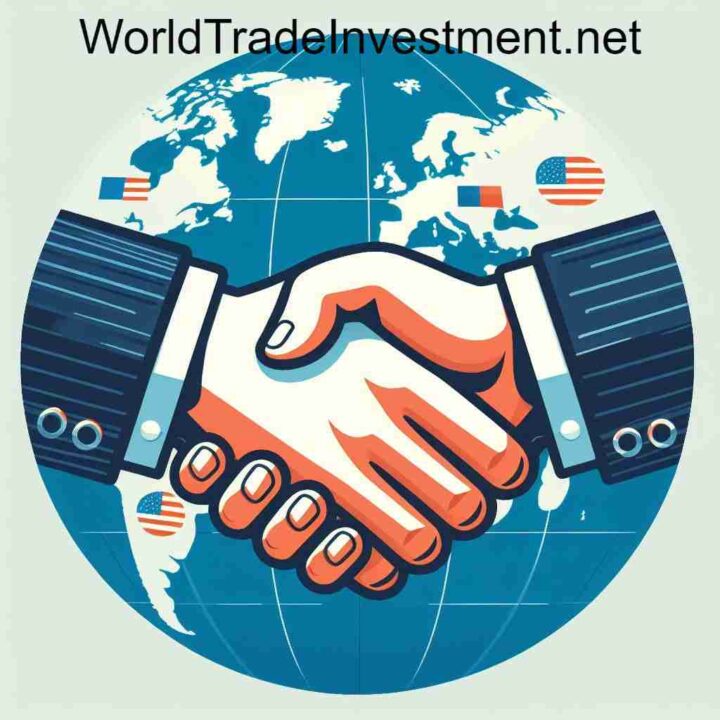
President Xi Jinping is welcomed by Russian President Vladimir Putin ahead of their meeting at the Kremlin. Photo: DPA
President Xi Jinping’s ninth visit to Russia as Chinese leader, featuring a meeting with Russian counterpart Vladimir Putin, is expected to usher in greater economic cooperation between the countries after bilateral trade saw an annual rise of 29.3 per cent last year, to US$190.3 billion.
Last year’s bilateral trade figure represented an increase of 116 per cent over a decade ago, as tensions with the United States and its allies over the Ukraine war have been pushing Russia and China closer.
In the past year, China replaced Europe to become Russia’s biggest buyer of its energy products, while Russia’s reliance on Chinese products – from computer chips to cars – has also increased.
What is the trade relationship between China and Russia?
China has been Russia’s biggest trading partner for 13 years, while for China, Russia ranked 10th in terms of overall value among countries and regions that it traded with last year.
According to Chinese customs figures, overall trade between China and Russia rose by 29.3 per cent to US$190.3 billion last year, up from US$147 billion in 2021.
Imports from Russia rose by 43.4 per cent, while Chinese exports increased by 12.8 per cent.
It was mostly bolstered by an increase in China’s purchases of Russian energy products.
Xi Jinping in Moscow to discuss Chinese peace plan for Ukraine with Russia’s Vladimir Putin
Unlike with most other countries, China has a trade deficit with Russia, as energy trade is the most important aspect of their relationship.
EVERY SATURDAY
A weekly curated round-up of social, political and economic stories from China and how they impact the world. GET THE NEWSLETTE
Crude oil is the most valuable commodity in China-Russia trade, accounting for half of Chinese imports.
Russia is China’s biggest energy supplier and the second-biggest exporter of crude oil, after Saudi Arabia.
Last year, China’s crude imports from Russia increased by 8 per cent in volume, but 44 per cent in US dollar terms – a historic high driven by soaring energy prices amid the Ukraine war.




